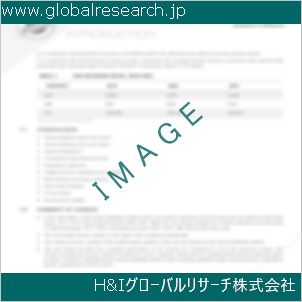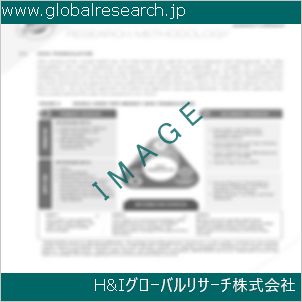Table of Contents
1 Industry Overview of Butylnitrite
1.1 Definition and Specifications of Butylnitrite
1.1.1 Definition of Butylnitrite
1.1.2 Specifications of Butylnitrite
1.2 Classification of Butylnitrite
1.3 Applications of Butylnitrite
1.3.1 Nuclear Application
1.3.2 Non-Nuclear Application
1.4 Industry Chain Structure of Butylnitrite
1.5 Industry Overview and Major Regions Status of Butylnitrite
1.5.1 Industry Overview of Butylnitrite
1.5.2 Global Major Regions Status of Butylnitrite
1.6 Industry Policy Analysis of Butylnitrite
1.7 Industry News Analysis of Butylnitrite
2 Manufacturing Cost Structure Analysis of Butylnitrite
2.1 Raw Material Suppliers and Price Analysis of Butylnitrite
2.2 Equipment Suppliers and Price Analysis of Butylnitrite
2.3 Labor Cost Analysis of Butylnitrite
2.4 Other Costs Analysis of Butylnitrite
2.5 Manufacturing Cost Structure Analysis of Butylnitrite
2.6 Manufacturing Process Analysis of Butylnitrite
3 Technical Data and Manufacturing Plants Analysis of Butylnitrite
3.1 Capacity and Commercial Production Date of Global Butylnitrite Major Manufacturers in 2023
3.2 Manufacturing Plants Distribution of Global Butylnitrite Major Manufacturers in 2023
3.3 R&D Status and Technology Source of Global Butylnitrite Major Manufacturers in 2023
3.4 Raw Materials Sources Analysis of Global Butylnitrite Major Manufacturers in 2023
4 Capacity, Production and Revenue Analysis of Butylnitrite by Regions, Types and Manufacturers
4.1 Global Capacity, Production and Revenue of Butylnitrite by Regions 2019-2024
4.2 Global and Major Regions Capacity, Production, Revenue and Growth Rate of Butylnitrite 2019-2024
4.3 Global Capacity, Production and Revenue of Butylnitrite by Types 2019-2024
4.4 Global Capacity, Production and Revenue of Butylnitrite by Manufacturers 2019-2024
5 Price, Cost, Gross and Gross Margin Analysis of Butylnitrite by Regions, Types and Manufacturers
5.1 Price, Cost, Gross and Gross Margin Analysis of Butylnitrite by Regions 2019-2024
5.2 Price, Cost, Gross and Gross Margin Analysis of Butylnitrite by Types 2019-2024
5.3 Price, Cost, Gross and Gross Margin Analysis of Butylnitrite by Manufacturers 2019-2024
6 Consumption Volume, Consumption Value and Sale Price Analysis of Butylnitrite by Regions, Types and Applications
6.1 Global Consumption Volume and Consumption Value of Butylnitrite by Regions 2019-2024
6.2 Global and Major Regions Consumption Volume, Consumption Value and Growth Rate of Butylnitrite 2019-2024
6.3 Global Consumption Volume and Consumption Value of Butylnitrite by Types 2019-2024
6.4 Global Consumption Volume and Consumption Value of Butylnitrite by Applications 2019-2024
6.5 Sale Price of Butylnitrite by Regions 2019-2024
6.6 Sale Price of Butylnitrite by Types 2019-2024
6.7 Sale Price of Butylnitrite by Applications 2019-2024
6.8 Market Share Analysis of Butylnitrite by Different Sale Price Levels
7 Supply, Import, Export and Consumption Analysis of Butylnitrite
7.1 Supply, Consumption and Gap of Butylnitrite 2019-2024
7.2 Global Capacity, Production, Price, Cost, Revenue, Supply, Import, Export and Consumption of Butylnitrite 2019-2024
7.3 USA Capacity, Production, Price, Cost, Revenue, Supply, Import, Export and Consumption of Butylnitrite 2019-2024
7.4 EU Capacity, Production, Price, Cost, Revenue, Supply, Import, Export and Consumption of Butylnitrite 2019-2024
7.5 China Capacity, Production, Price, Cost, Revenue, Supply, Import, Export and Consumption of Butylnitrite 2019-2024
7.6 Japan Capacity, Production, Price, Cost, Revenue, Supply, Import, Export and Consumption of Butylnitrite 2019-2024
8 Major Manufacturers Analysis of Butylnitrite
8.1 Manufacturer One
8.1.1 Company Profile
8.1.2 Product Picture and Specifications
8.1.2.1 Type I
8.1.2.2 Type II
8.1.2.3 Type III
8.1.3 Capacity, Production, Price, Cost, Gross and Revenue
8.1.4 Contact Information
8.2 Manufacturer Two
8.2.1 Company Profile
8.2.2 Product Picture and Specifications
8.2.2.1 Type I
8.2.2.2 Type II
8.2.2.3 Type III
8.2.3 Capacity, Production, Price, Cost, Gross and Revenue
8.2.4 Contact Information
8.3 Manufacturer Three
8.3.1 Company Profile
8.3.2 Product Picture and Specifications
8.3.2.1 Type I
8.3.2.2 Type II
8.3.2.3 Type III
8.3.3 Capacity, Production, Price, Cost, Gross and Revenue
8.3.4 Contact Information
8.4 Manufacturer Four
8.4.1 Company Profile
8.4.2 Product Picture and Specifications
8.4.2.1 Type I
8.4.2.2 Type II
8.4.2.3 Type III
8.4.3 Capacity, Production, Price, Cost, Gross and Revenue
8.4.4 Contact Information
8.5 Manufacturer Five
8.5.1 Company Profile
8.5.2 Product Picture and Specifications
8.5.2.1 Type I
8.5.2.2 Type II
8.5.2.3 Type III
8.5.3 Capacity, Production, Price, Cost, Gross and Revenue
8.5.4 Contact Information
…
9 Marketing Trader or Distributor Analysis of Butylnitrite
9.1 Marketing Channels Status of Butylnitrite
9.2 Traders or Distributors with Contact Information of Butylnitrite by Regions
9.3 Ex-work Price, Channel Price and End Buyer Price Analysis of Butylnitrite
9.4 Regional Import, Export and Trade Analysis of Butylnitrite
10 Industry Chain Analysis of Butylnitrite
10.1 Upstream Major Raw Materials Suppliers Analysis of Butylnitrite
10.1.1 Major Raw Materials Suppliers with Contact Information Analysis of Butylnitrite
10.1.2 Major Raw Materials Suppliers with Supply Volume Analysis of Butylnitrite by Regions
10.2 Upstream Major Equipment Suppliers Analysis of Butylnitrite
10.2.1 Major Equipment Suppliers with Contact Information Analysis of Butylnitrite
10.2.2 Major Equipment Suppliers with Product Pictures Analysis of Butylnitrite by Regions
10.3 Downstream Major Consumers Analysis of Butylnitrite
10.3.1 Major Consumers with Contact Information Analysis of Butylnitrite
10.3.2 Major Consumers with Consumption Volume Analysis of Butylnitrite by Regions
10.4 Supply Chain Relationship Analysis of Butylnitrite
11 Development Trend of Analysis of Butylnitrite
11.1 Capacity, Production and Revenue Forecast of Butylnitrite by Regions and Types
11.1.1 Global Capacity, Production and Revenue of Butylnitrite by Regions 2024-2029
11.1.2 Global and Major Regions Capacity, Production, Revenue and Growth Rate of Butylnitrite 2024-2029
11.1.3 Global Capacity, Production and Revenue of Butylnitrite by Types 2024-2029
11.2 Consumption Volume and Consumption Value Forecast of Butylnitrite by Regions, Types and Applications
11.2.1 Global Consumption Volume and Consumption Value of Butylnitrite by Regions 2024-2029
11.2.2 Global and Major Regions Consumption Volume, Consumption Value and Growth Rate of Butylnitrite 2024-2029
11.2.3 Global Consumption Volume and Consumption Value of Butylnitrite by Types 2024-2029
11.2.4 Global Consumption Volume and Consumption Value of Butylnitrite by Applications 2024-2029
11.3 Supply, Import, Export and Consumption Forecast of Butylnitrite
11.3.1 Supply, Consumption and Gap of Butylnitrite 2024-2029
11.3.2 Global Capacity, Production, Price, Cost, Revenue, Supply, Import, Export and Consumption of Butylnitrite 2024-2029
11.3.3 USA Capacity, Production, Price, Cost, Revenue, Supply, Import, Export and Consumption of Butylnitrite 2024-2029
11.3.4 EU Capacity, Production, Price, Cost, Revenue, Supply, Import, Export and Consumption of Butylnitrite 2024-2029
11.3.5 China Capacity, Production, Price, Cost, Revenue, Supply, Import, Export and Consumption of Butylnitrite 2024-2029
11.3.6 Japan Capacity, Production, Price, Cost, Revenue, Supply, Import, Export and Consumption of Butylnitrite 2024-2029
12 New Project Investment Feasibility Analysis of Butylnitrite
12.1 New Project SWOT Analysis of Butylnitrite
12.2 New Project Investment Feasibility Analysis of Butylnitrite
13 Conclusion of the Global Butylnitrite (CAS 544-16-1) Industry 2024 Market Research Report
| ※参考情報 亜硝酸n-ブチル(Butylnitrite)は、化学式C4H9NO2で表される有機化合物であり、CAS番号は544-16-1です。主に、動物や植物の体内で生成される自然な化合物の一つであり、さまざまな用途があることから、化学業界や医療分野で注目されています。 亜硝酸n-ブチルは、揮発性の液体であり、黄褐色の色を呈しています。常温では液体として存在し、特異な甘い香りを持つことが特徴です。この化合物は、一般的にエステルの一種であり、多くの他の化合物と反応する能力を持っています。そのため、さまざまな化学反応において重要な役割を果たしています。 亜硝酸n-ブチルにはいくつかの種類があり、特にブチル基の位置や構造によって異なる形態を持つことができます。例えば、n-ブチルの他に、イソブチルやtert-ブチルなどが存在します。それぞれの異なる型は、用途や特性において微細な差異を持っています。 この化合物の主な用途の一つは、医薬品における使用です。具体的には、亜硝酸n-ブチルは、血管拡張剤として用いられることがあります。これにより、血流の改善や、心疾患の治療に寄与します。また、国内外のいくつかの研究では、亜硝酸塩類が持つ細胞保護作用や抗酸化作用に焦点を当てたものもあり、さまざまな病気予防の可能性が探求されています。 さらに、亜硝酸n-ブチルは工業的にも利用され、その用途は多岐にわたります。例えば、合成樹脂やプラスチックの添加剤として使われることがあり、製品の性能向上に寄与しています。また、亜硝酸エステルの一形態であることから、他の化合物と結合して新たな物質を合成するための反応試薬としても利用されます。 関連技術としては、亜硝酸の化学合成が挙げられます。通常、この化合物は、アルコール(n-ブタノールなど)と亜硝酸ナトリウムとの反応を通じて合成されます。この方法は、比較的簡便で効率的であり、品質の高い亜硝酸エステルを合成するための基本的な方法として認識されています。製造プロセスには、反応条件や触媒の選定など、厳格な管理が求められます。 一方で、亜硝酸n-ブチルは揮発性が高く、取り扱いにおいては注意が必要です。特に、吸入や皮膚との接触は健康に悪影響を及ぼす可能性があるため、適切な防護具を使用し、安全な労働環境を確保することが重要です。加えて、亜硝酸の化合物は、一部において発癌性の疑いがあると指摘されていることから、その取り扱いには法的な規制が存在し、安全基準に従った管理が重要です。 このように、亜硝酸n-ブチルは、その化学的特性や多様な用途から、多くの分野で注目される存在です。医療や化学工業の中での応用が進む一方で、安全性に関する研究や管理にも力が入れられています。これらの取り組みを通じて、今後の発展が期待される化合物の一つであると言えるでしょう。 |
❖ 免責事項 ❖
http://www.globalresearch.jp/disclaimer












